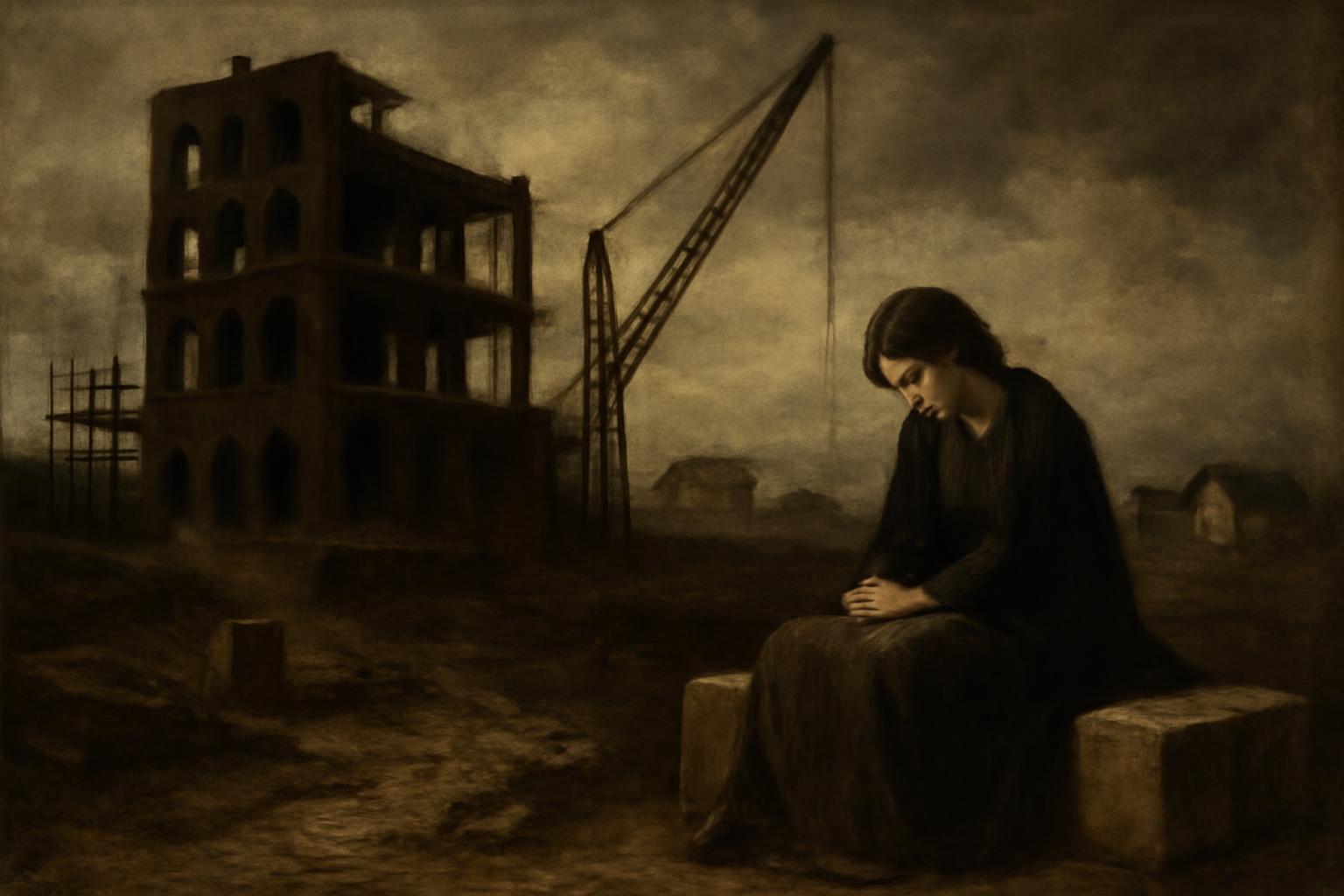The permits rise, and with them the tremor of a late, mournful renewal: Germany granting roughly 110,000 approvals in the first half, a 2.9 percent ascent that imitates a pulse beating through the pallid cartilage of modern planning. In June alone, 19,000 permits—7.9 percent higher than a year ago—like a stubborn spark in damp stone. Yet the spark flickers where it ought to blaze.
Single-family homes lead the clandestine march, up 14.1 percent to 21,300 units, as if the old private wall had learned to wage a war of shelter against the encroaching cold. Two-family dwellings retreat, down 8.3 percent to 6,000, while multifamily housing—still the leviathan of the sector—almost holds its breath, at 57,300 approvals, a mere 0.1 percent rise. Numbers move like actors in a solemn Greek chorus: the foreground claims vigor, the background shivers with doubt, and the entire scene remains perched between promise and delay.
But the theater of construction is no cortège of fulfillment. Projects may scatter like leaves after autumn’s wind; permit does not guarantee birth, and completion lingers. Last year yielded 251,900 dwellings finished—the fewest since 2015—and the path from permit to completion has lengthened by about six months since 2020, now stretching to roughly 26 months. The architecture of hope is tethered to time, and time, with Nietzschean gravity, answers not with grace but with the inexorable weight of the earth.
Meanwhile the housing market itself wears a crown of thorns. Costs loom large; the dream of ownership frays under the glare of prices and frictions. Only 33 percent name home ownership as a savings goal, down ten percentage points from last year, a retreat most pronounced among the young and the middle-aged. The social script shifts; what once sounded like a straightforward civic virtue—saving for a home—now strains under the burden of present costs, deferring the future into a philosophical dusk.
And still the politicians offer a sign, a gleam of mechanized will: a “brechstange” to pry open faster building, a crowbar wielded upon the stubborn door of zoning and bureaucracy. The image is almost tragically classical: humanity pressing against the stubborn rock of endurance, hoping a nimble hand can fracture the ancient stone of constraint.
Yet I hear in these numbers the echo of a broader ruin. The western polis, straining with speed and demand, begins to resemble a modern tragedy: a chorus that cannot decide whether to praise the will to build or lament the cost of its own appetite. If Nietzsche asks what does not kill us makes us stronger, one might answer: the city’s appetite grows, but its limbs grow weary; the time between decree and datum wears down its moral fibre. The longing for shelter, once a sacred vow of communal life, becomes a skeletal ritual of efficiency and risk, a shadow of the noble architecture that once claimed to outlast the ages.
In this, the decline and the dream walk hand in hand, as in a Greek tragedy where the architects of fate mistake their instrument for destiny. The numbers are not merely statistics; they are the tremors of a culture trying to stand upright in a gale of change, grasping at crowbars as if they could pry the future into the present. And so the ancient question returns with a sob: what kind of home, what kind of civilization, can endure when the foundations tremble, when time itself elongates the distance between intent and realization, and when the dream of shelter becomes, at last, another chapter in a melancholic epic of decline?
